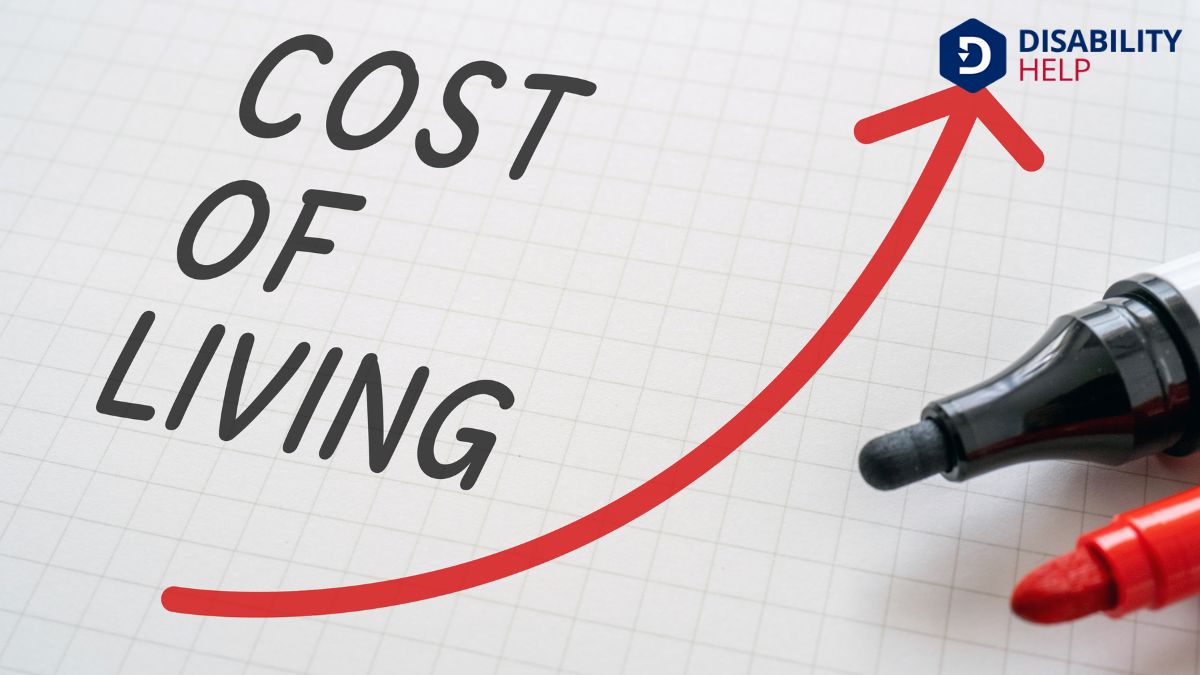We're all curious about the 2025 Social Security increase, mainly centered on the Cost of Living Adjustment (COLA). COLAs aim to keep our benefits in line with inflation, ensuring we don't lose purchasing power as prices rise. They're calculated based on the Consumer Price Index for Urban Wage Earners and Clerical Workers (CPI-W). While the exact increase for 2025 isn't set yet, understanding what influences it, such as economic trends and demographic shifts, helps us prepare. Staying informed about these adjustments now will equip us for financial decisions in the future. Let's uncover more about these important changes.
Key Takeaways
- The 2025 Social Security increase will depend on the Consumer Price Index for Urban Wage Earners and Clerical Workers (CPI-W).
- Cost of Living Adjustments (COLAs) ensure Social Security benefits maintain purchasing power against inflation.
- The exact COLA for 2025 will be announced by the Social Security Administration based on 2024 economic data.
- Previous COLAs have varied, reflecting changes in inflation and economic conditions.
- Beneficiaries should monitor updates for 2025 COLA announcements to plan their financial strategies effectively.
Factors Affecting Social Security
When we investigate the factors influencing Social Security, it's crucial to examine both economic trends and demographic shifts. Our understanding of these elements helps us foresee potential changes.
First, economic trends like employment rates and wage growth play a vital role. Higher employment rates mean more contributions to the Social Security fund, which strengthens its financial health. Conversely, high unemployment or stagnant wages can strain the system.
Demographic shifts, including the aging population and birth rates, also significantly influence Social Security. As more baby boomers retire, the number of beneficiaries increases, while the workforce supporting them mightn't grow at the same pace. This imbalance poses a challenge to maintaining the program's sustainability.
Additionally, we must consider legislative actions that impact Social Security. Changes in laws can alter benefits, eligibility, or funding mechanisms. Policymakers might adjust these factors to address financial pressures or demographic realities.
Understanding Cost of Living Adjustments

Let's explore the concept of Cost of Living Adjustments (COLAs), which are important for maintaining the purchasing power of Social Security benefits. As prices for goods and services rise over time due to inflation, our Social Security benefits could lose value if not adjusted. COLAs are designed to counteract this effect.
By increasing benefits based on the Consumer Price Index for Urban Wage Earners and Clerical Workers (CPI-W), COLAs help ensure that what we receive keeps pace with the cost of living.
Each year, the Social Security Administration evaluates the CPI-W to determine if a COLA is necessary. When inflation causes costs to increase, a COLA is applied to our benefits. This adjustment helps us afford the same standard of living despite rising prices.
Without COLAs, beneficiaries might struggle to cover essential expenses such as groceries, housing, and healthcare.
We should note that not every year sees a COLA. If inflation is stagnant or prices decrease, no adjustment is made. Understanding how COLAs function empowers us to better manage our expectations and financial planning regarding our Social Security benefits.
They play an important role in our financial well-being as we navigate changes in the economy.
Projected COLA for 2025
Anticipating the 2025 Cost of Living Adjustment (COLA), we look forward to understanding how changes in the economy might affect our Social Security benefits. The COLA is essential because it helps our benefits keep pace with inflation, ensuring our purchasing power doesn't diminish over time.
While exact figures for 2025 aren't available yet, analysts typically consider several economic indicators to project the potential increase.
One primary factor is the Consumer Price Index for Urban Wage Earners and Clerical Workers (CPI-W). This index tracks price changes in goods and services, providing a gauge for inflation. If the CPI-W rises, it suggests we'll see a higher COLA to match increased living costs. Recent trends and economic forecasts give us some insights, but they're subject to change as new data emerges.
It's crucial for us to stay informed about these projections, as they directly impact our financial planning. By understanding how the COLA is calculated and what factors influence it, we can better prepare for the adjustments to our benefits. Ultimately, keeping an eye on these trends helps us anticipate changes and make informed decisions about our financial future.
Inflation Impact on Benefits
Understanding how inflation impacts our Social Security benefits is essential for effective financial planning. We've all felt the pinch of rising costs, whether at the grocery store or when paying our utility bills. When inflation rises, it erodes the purchasing power of our benefits, meaning our dollars don't stretch as far as they used to. The government attempts to mitigate this impact through the annual Cost-of-Living Adjustment (COLA), which aims to keep our benefits aligned with the cost of living.
Let's consider the emotional toll of inflation on our financial stability:
- Uncertainty: Rising prices make us question if our benefits will cover essential expenses in the future.
- Stress: The need to adjust our budgets to accommodate inflation-induced price hikes can lead to financial anxiety.
- VulnerabilityThe increased risk of harm or exploitation faced by individuals with disabilities, often due to soci...: Fixed incomes can leave us feeling exposed to the whims of an unpredictable economy.
Understanding these impacts helps us prepare and make informed decisions. We can explore ways to supplement our income or adjust our spending to maintain our desired standard of living. While we can't control inflation, awareness and proactive planning empower us to better navigate its challenges.
How Benefits Are Calculated
Calculating our Social Security benefits might seem complex, but breaking it down can make it clearer. First, let's understand that our benefits are based on the 35 years in which we earned the most. The Social Security Administration (SSA) takes our earnings from those years, adjusts them for inflation, and then averages them. This average is known as the Average Indexed Monthly Earnings (AIME).
Once we've our AIME, the SSA uses a formula to determine our Primary Insurance Amount (PIA). The PIA is the basis for our benefits and is calculated through a progressive formula that replaces a higher percentage of the first chunk of our earnings and smaller percentages of the subsequent chunks. It means those with lower lifetime earnings might see a higher proportion of their earnings replaced.
Our full retirement age (FRA) plays a significant role too. If we claim benefits before reaching our FRA, our monthly benefits will be reduced.
Conversely, if we wait until after our FRA, our benefits might increase based on delayed retirement credits. Remember, understanding these calculations helps us make informed decisions about when to start claiming our benefits.
Changes in Average Benefit Amounts
With the new year approaching, we're all interested in how our Social Security benefits might change. As we anticipate 2025, understanding the adjustments in average benefit amounts becomes vital for our financial planning. The Social Security Administration (SSA) typically adjusts benefits to keep pace with inflation and the rising cost of living. This adjustment is known as the Cost-of-Living Adjustment (COLA).
Here's what we should know about the expected changes:
- Increased Monthly Benefits: We could see an increase in our monthly checks. While the exact percentage increase will depend on the inflation rate, any rise helps us maintain our purchasing power.
- Impact on Annual Income: Even a small percentage increase can have a significant impact over the year. It means more money in our pockets, allowing us to cover essential expenses and potentially enjoy a better quality of life.
- Enhanced Financial Security: Changes in benefits reflect the government's effort to support our financial well-being. It's reassuring to know that Social Security aims to help us keep up with economic changes.
Strategies to Maximize Benefits
To make the most of our Social Security benefits, we should always consider strategies that can enhance our financial outcomes. One effective approach is delaying our benefits. If we wait until after our full retirement age, benefits increase by about 8% per year until age 70. This strategy isn't for everyone, but it can significantly boost our monthly income if we're able to wait.
We should also be mindful about when we claim spousal benefits. Coordinating with our spouses can maximize the total benefits received. For instance, one spouse might claim earlier while the other delays to maximize their own benefit.
Another strategy is to continue working and increasing our earnings. Social Security calculates benefits based on the 35 highest-earning years. By continuing to work, especially if we're earning more than in previous years, we can substitute lower-earning years in the calculation, potentially increasing our benefits.
Preparing for Future Adjustments

As we gaze towards the future, it's crucial for us to remain updated about potential adjustments to Social Security that could impact our benefits. Understanding these changes aids us in making informed decisions and planning with greater certainty. Social Security adjustments can manifest in various ways, from cost-of-living modifications to policy shifts. By preparing ourselves, we can navigate these changes more effectively and have confidence in our financial stability.
To better equip ourselves for future adjustments, let's consider a few proactive steps:
- Stay Informed: Regularly check credible sources for updates on Social Security policies. Newsletters, government websites, and financial advisors can provide reliable information. Staying updated means we're never caught off guard by changes.
- Review Our Benefits: Periodically reviewing our Social Security statements helps us comprehend our future benefits. This practice ensures that we're aware of what to anticipate and can identify discrepancies early.
- Plan for Multiple Scenarios: Create financial plans that consider different potential outcomes. This way, if adjustments impact our benefits, we're prepared with alternative strategies to uphold our lifestyle.
Conclusion
To sum up, we've delved into the factors shaping Social Security, including the projected COLA for 2025 and its inflation impact. Understanding how benefits are calculated and potential changes in average benefit amounts help us plan better. By employing strategies to maximize benefits, we can secure a more stable financial future. Let's stay informed and proactive, preparing for any adjustments that come our way so that we can make the most of our Social Security benefits.






